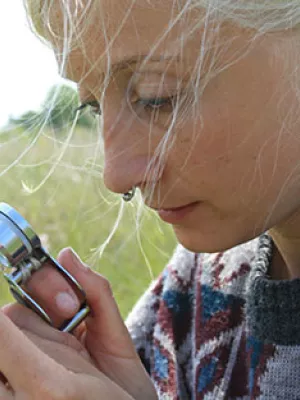
Lina Herbertsson
Researcher

The relation between oilseed rape and pollination of later flowering plants varies across plant species and landscape contexts
Author
Summary, in English
Increasing cultivation of oilseed rape may have consequences for pollinators and wild plant pollination. By providing pollinating insects with pollen and nectar, oilseed rape benefits short-tongued, generalist insect species. Long-tongued bumble bee species, specialized to other flower types, may instead be negatively affected by increased competition from the generalists (e.g. due to nectar-robbing of long-tubed flowers) after oilseed rape flowering has ceased. We expected that the increased abundance of short-tongued pollinators and reduced abundance of long-tongued bumble bees in landscapes with a high proportion of oilseed rape would impact the pollination of later flowering wild plant species. In addition, we expected contrasting effects on plants pollinated by short-tongued pollinators and those pollinated by long-tongued bumble bees. We predicted that semi-natural grasslands, which provide insects with alternative floral resources, would reduce both negative and positive effects on pollination by mitigating competition between pollinators.In 16 semi-natural grasslands, surrounded by agricultural landscapes, with a variation in both the proportion of oilseed rape and the proportion of semi-natural grassland within 1. km, we studied reproductive output in two species of potted plants with different pollination strategies: the woodland strawberry (Fragaria vesca) and red clover (Trifolium pratense). The first species is mainly pollinated by short-tongued pollinators, e.g. hoverflies and solitary bees, and the latter by long-tongued bumble bees. Both species flowered after oilseed rape.Strawberry weight was higher in landscapes with a high proportion of oilseed rape, but only in landscapes with a low proportion of semi-natural grassland. The proportion of developed achenes was also positively related to the proportion of oilseed rape, but only during the latest flowering period. In contrast, red clover seed set was unrelated to the proportion of oilseed rape. Whereas the discrepancy between the two strawberry measurements calls for further research, this study suggests that oilseed rape can affect later flowering plants and that the impact differs among species.
Department/s
- Centre for Environmental and Climate Science (CEC)
- Biodiversity
- BECC: Biodiversity and Ecosystem services in a Changing Climate
- Biodiversity and Conservation Science
Publishing year
2017-11
Language
English
Pages
77-85
Publication/Series
Basic and Applied Ecology
Volume
24
Document type
Journal article
Publisher
Elsevier
Topic
- Ecology
- Environmental Sciences related to Agriculture and Land-use
Keywords
- Brassica napus
- Canola
- Fragaria vesca
- Rapeseed
- Tongue-length
- Trifolium pratense
Status
Published
Research group
- Biodiversity and Conservation Science
ISBN/ISSN/Other
- ISSN: 1439-1791